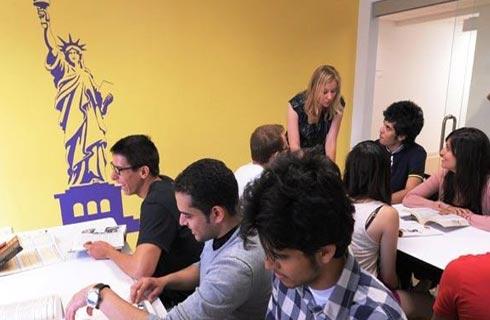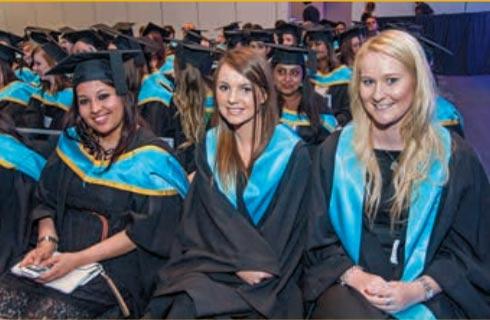化学哲学博士-无机化学
Doctor of Philosophy in Chemistry - Inorganic Chemistry

学历文凭
Ph.D.

专业院系
Department of Chemistry

开学时间

课程时长

课程学费

国际学生入学条件
IDP—雅思考试联合主办方

雅思考试总分
6.5
- 雅思总分:6.5
- 托福网考总分:90
- 托福笔试总分:160
- 其他语言考试:Duolingo - 110
CRICOS代码:
申请截止日期: 请与IDP联系 以获取详细信息。
课程简介
The Department of Chemistry, within the College of Arts and Sciences, offers courses of study leading to the degrees of Master of Arts in Teaching Chemistry, Master of Science, and Doctor of Philosophy. Students in the M.A.T. program must register through the School of Professional Development. A student in the Ph.D. program may choose dissertation research in any one of the diverse areas of chemistry represented by the interests of the program faculty, or may choose an interdisciplinary topic under the guidance of a faculty member in another program. Coordinated activities exist with several programs, and include optional concentrations in chemical physics and chemical biology. <br><br>Inorganic chemistry, being concerned with the synthesis, structure, and dynamics of the compounds formed by the more than 100 natural and synthetic elements, covers an extremely vast research area. New compounds and new synthetic methods are among the goals of inorganic chemistry research. Such compounds range from materials important in technology to catalysts for industrial chemical processes, small molecules present in outer space, and metal complexes that serve as models for biological materials. The methodologies used in inorganic chemistry include a wide variety of spectroscopic techniques, kinetic methods, procedures for the elucidation of geometric and electronic structures, and theory. The breadth and depth of inorganic chemistry are well represented at Stony Brook, as seen by the following examples of current research: thermally and photochemically activated dynamic processes, in particular, electron transfer reactions, synthetic and structural studies of active site analogs of metalloenzymes such as the zinc proteins that regulate gene transcription and the high-potential iron-sulfur proteins, activation of small molecules by transition metal complexes and homogeneous catalysis, chemistry of unsaturated carbon-metal bonds in mononuclear compounds and in extended molecular assemblies, molecular orbital calculations and molecular mechanics methods applied to transition metal cluster compounds and related organometallic substances, NMR studies of zeolites and supported catalysts.
相关申请
 预科
预科 奖学金
奖学金 实习机会
实习机会 在校学习
在校学习 跨境学习
跨境学习 校园授课-线上开始
校园授课-线上开始 在线/远程学习
在线/远程学习
开学时间&学费
学费信息仅供参考,请与IDP联系以获取详细信息
| 开学时间 | 时长 | 学费 | 地点 |
|---|
学校排名

世界排名251
数据源:
泰晤士高等教育世界大学排名
关于纽约州立大学石溪分校

石溪大学(简称 SBU)成立于 1957 年,位于纽约州长岛,是一所充满活力的公立大学。该大学共有约 25000 名学生,其中包括 17000 多名本科生,支持着一个庞大而多元化的学术社区,同时提供丰富而令人兴奋的大学体验。该大学提供广泛的本科、研究生和博士课程,涵盖多个领域。该校在科学、工程和医学方面拥有坚实的基础,并辅以艺术、人文和社会科学课程。热门专业包括生物医学工程、海岸环境研究和计算机科学,每个专业都将学校的前沿研究与基于实践经验的学习相结合,为学生完成学业后从事专业工作做好准备。根据2024年《美国新闻与世界报道 》,SBU 在纽约州公立大学中排名第一,在全美公立大学中排名第 26 位。同一份研究报告还将该大学的社会流动性排在全美第 12 位,并跻身全美十大最多元化大学之列。SBU 是纽约州立大学(SUNY)系统的一部分,并于 2022 年被纽约州州长正式指定为纽约州立大学的两所旗舰大学之一。该大学的长岛校区为学生提供了一系列美丽的海滩,同时还拥有靠近纽约市的所有优势,为学生提供了丰富的教育和课外活动机会。
本校相关课程

妇女与性别研究文学士
学历文凭
Bachelor Degree
开学日期
课程费用总额


技术系统管理理学学士
学历文凭
Bachelor Degree
开学日期
课程费用总额


可持续发展研究文学学士学位
学历文凭
Bachelor Degree
开学日期
课程费用总额


西班牙语言文学学士学位
学历文凭
Bachelor Degree
开学日期
课程费用总额


社会学文学学士
学历文凭
Bachelor Degree
开学日期
课程费用总额


社会工作科学学士学位
学历文凭
Bachelor Degree
开学日期
课程费用总额

其他相关课程

化学哲学博士-无机化学
 缅因大学
缅因大学学历文凭
Ph.D.
开学日期
课程费用总额


化学和化学生物学理学硕士-分析
 康奈尔大学
康奈尔大学泰晤士高等教育世界大学排名:18
学历文凭
Masters Degree
开学日期
课程费用总额


化学哲学博士-无机
 北卡罗莱纳州立大学罗利分校
北卡罗莱纳州立大学罗利分校学历文凭
Ph.D.
开学日期
课程费用总额


化学和化学生物学理学硕士-化学生物学
 康奈尔大学
康奈尔大学泰晤士高等教育世界大学排名:18
学历文凭
Masters Degree
开学日期
课程费用总额


化学理学硕士-环境化学
 缅因大学
缅因大学学历文凭
Masters Degree
开学日期
课程费用总额


Doctor of Philosophy in Chemistry and Biochemistry - Inorganic Chemistry
 加州大学圣地亚哥分校
加州大学圣地亚哥分校学历文凭
Ph.D.
开学日期
课程费用总额










